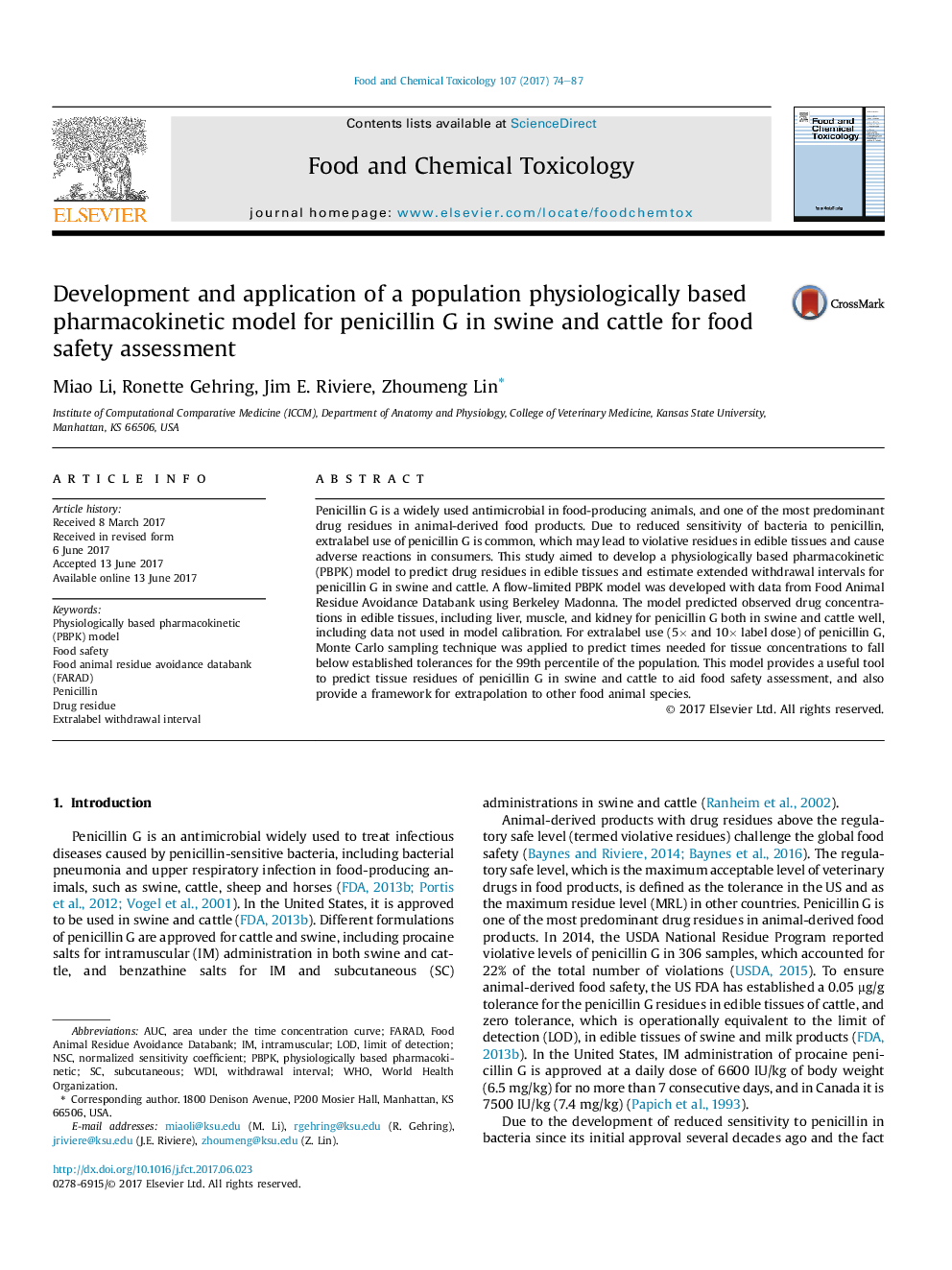| Article ID | Journal | Published Year | Pages | File Type |
|---|---|---|---|---|
| 5560064 | Food and Chemical Toxicology | 2017 | 14 Pages |
â¢A population PBPK model for procaine penicillin G in swine and cattle was developed.â¢The dissolution process of procaine penicillin G was incorporated into the model.â¢The model predicted drug concentrations in edible tissues well for swine and cattle.â¢The model can estimate withdrawal intervals after extralabel use of penicillin G.
Penicillin G is a widely used antimicrobial in food-producing animals, and one of the most predominant drug residues in animal-derived food products. Due to reduced sensitivity of bacteria to penicillin, extralabel use of penicillin G is common, which may lead to violative residues in edible tissues and cause adverse reactions in consumers. This study aimed to develop a physiologically based pharmacokinetic (PBPK) model to predict drug residues in edible tissues and estimate extended withdrawal intervals for penicillin G in swine and cattle. A flow-limited PBPK model was developed with data from Food Animal Residue Avoidance Databank using Berkeley Madonna. The model predicted observed drug concentrations in edible tissues, including liver, muscle, and kidney for penicillin G both in swine and cattle well, including data not used in model calibration. For extralabel use (5Ã and 10ÃÂ label dose) of penicillin G, Monte Carlo sampling technique was applied to predict times needed for tissue concentrations to fall below established tolerances for the 99th percentile of the population. This model provides a useful tool to predict tissue residues of penicillin G in swine and cattle to aid food safety assessment, and also provide a framework for extrapolation to other food animal species.
Graphical abstractDownload high-res image (218KB)Download full-size image
